The music of the Borneo rainforest is recreated using a combination of different instruments. The deep, hypnotic drumming of the beduk (long drum) represents the density of the jungle. While the whistles from the selingut (nose flute) and the chimes of the jatong utang (wooden xylophone) create a cacophony of birdsongs so common on a glorious morning.
Listen a little closer, you might even hear the strumming of a sape (Bornean boat lute), Sarawak’s most famous instrument, alongside melodies being sung in a beautiful local language.
Sarawak has a reputation for her colourful diversity and eccentric wildlife, but what do we know about her music and beautiful songs?
Commercial festivals such as the Rainforest World Music Festival are slowly taking Sarawak’s music to a wider audience by attracting thousands of international visitors every year. With the festival coming in July 2020, we thought it would be a good time to learn more about the traditional music of Sarawak.
We were lucky enough to get two icons of Sarawakian music to share with us their knowledge and insights.
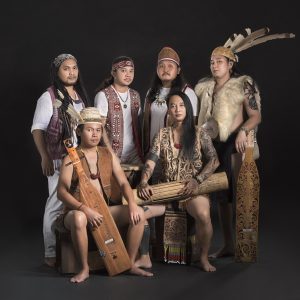

One of them is Lian, a member of the band At Adau. The name “At Adau” comes from two different indigenous languages from Borneo. “At” means “root” in Bidayuh language from the Bau region, while “Adau” is the name of a special tree that was exclusively used to make the Sape in the old days. The band classifies their genre as “ambience traditional contemporary world music”.
Another one of those musicians is Alena Murang, a famous sape player who upholds Kenyah and Kelabit oral traditions through her music and her art. She sings in the Kenyah and Kelabit languages. She also paints, hosts and does TV appearances.
Traditional music in the lives of Sarawakians
Music and art are so integrated with the lives of indigenous Sarawakians that most Dayak (indigenous people of Borneo) languages do not have a word for ‘music’ and ‘art’.
“I never really thought of myself as a musician, because it’s just what we do. It’s our form of being,” Alena tells us. “Our art forms are rooted in age-old knowledge. For our people, that knowledge is closely linked to the environment and how to be with it.”
Of course, Sarawakian music won’t be complete without the stories that make up its lyrics.
“Most indigenous tribes in Borneo have no written records, hence the use of verbal means such as poetic and melodic singing to remember stories,” Lian tells us. Because of this, traditional music holds a special place in the hearts of elder Sarawakians.
Alena learned traditional dance from her aunties from the age of 6 and then learned to play the sape with her cousins at 11 before being taught old Kelabit songs from her grand-aunties, aunties, and uncles. Lian, on the other hand, was inspired to play music by his father, who was a sape master.
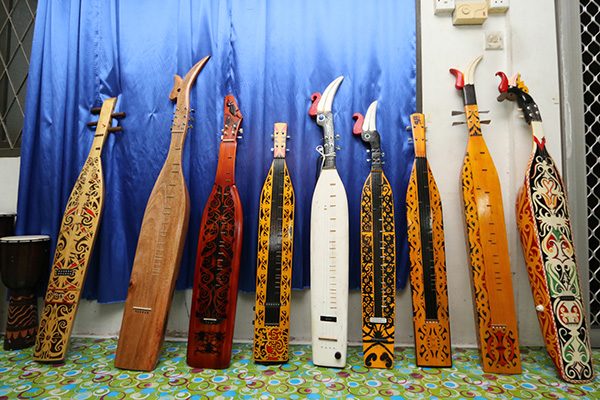
Source: Borneo Post Online
Where the music gets its inspiration
Every traditional song contains bits and pieces of the indigenous communities’ histories. The creation of traditional Sarawakian music comes from personal stories and occurrences that happen around an individual’s life. It is a creative expression of someone’s thoughts. For example, according to Lian, the “tekena” is an Orang Ulu song that describes a noble person’s life who was said to be a great warrior or a Paramount chief.
He also tells us that “tekena” is used as a form of giving advice to people. It is usually sung by the elders to the younger generation. Alena also shared with us the story of how the sape came to be.
It is said that in the past, there was a traditional healer whose wife fell very ill. One day he fell asleep on the farm under a tree and had a dream. In that dream, somebody came to him and told him to carve out a piece of the tree he fell asleep under and make an instrument with strings out of pineapple fibre. After that, he had to play tunes for his sick wife for her to be healed. As soon as he woke up, he did as the dream instructed and miraculously, his wife healed. Since then, the sape has been used in many ritual healing ceremonies.
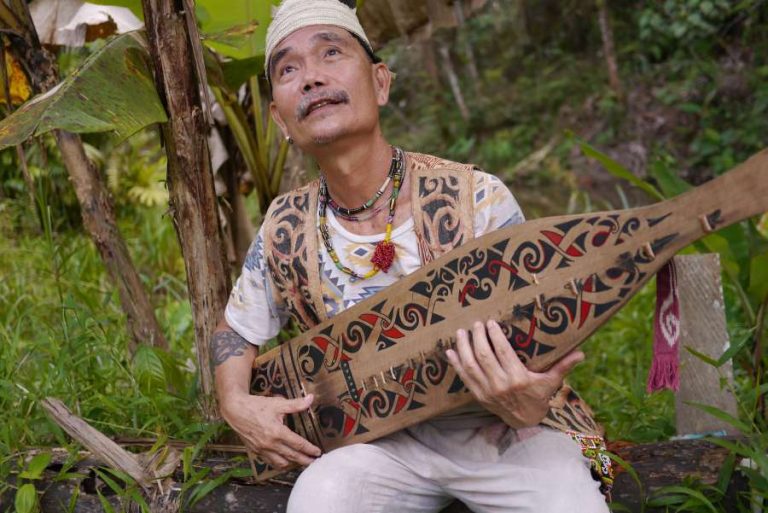
Elder Sarawakians pass on life lessons, traditions, and values to the younger generation through these oral recitals. Unfortunately, not many elders today can recall their historical songs accurately. Thus, younger generations of Sarawakians are taking the initiative to figure them out and preserve them for future generations.
In fact, Alena told us that her mentor, the sape master Mathew Ngau, initially questioned himself if he should teach Alena’s cousins and her how to play the sape as the instrument was originally meant for only men to play. It is frequently played to accompany many different cultural performances or rituals. However, since nobody was learning to play it, he decided to mentor them.
A lot of traditional music in Sarawak also comes from folklore. “They are spiritual in essence as they are inspired by flora and fauna,” Lian explains. Sarawakian music is used to tell legendary stories between men, monsters and animals. The music is an intricate combination of tales from the past and present.
The importance of keeping our traditions alive
In a world that is progressing rapidly every day, individuals often experience an inner conflict between embracing modernity and preserving their culture. How to do this is an enduring challenge for many of us.
Alena describes herself as “a modern Kelabit girl” and told us that there are some traditions that indigenous communities choose to keep, while there are some they do not. For the Kelabit people, traditions like getting tattooed before marriage, or having long ears, are no longer practised because they are no longer relevant to modern times.“
However, we still celebrate things like the name-changing ceremonies, and playing the sape has been revived too. It’s okay that some parts of our heritage and culture are lost, but we have to understand and know why they are being lost, and whether we allow for it to be lost.”
She gave the example of some Indigenous cultures around the world losing their language because they have been forbidden to speak it. “To those people, it is not okay to lose their language because it was lost in a forceful way. In our Kelabit culture, a lot of traditions were also lost because of changing belief systems.”
"The preservation of Sarawak's culture and heritage is important as it can serve as audio and visual documentation for future generations," Lian explains. His band, At Adau, just like Alena, decided to do their part by using music to help in the preservation process. "Younger people can refer to the music to understand and discover the beauty of their roots."
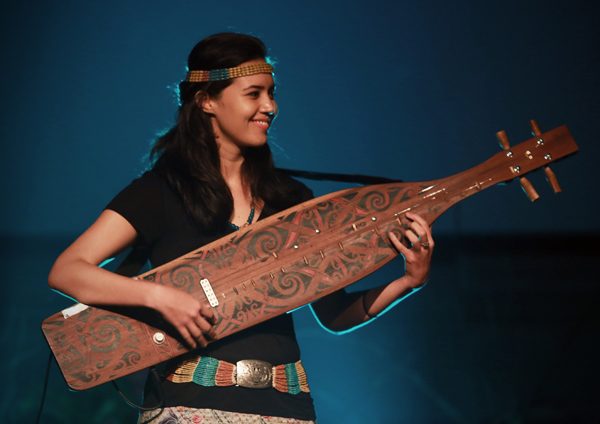
Unlike most people, Alena has a different take on the word ‘traditional’.
“Words like ‘traditional’, ‘conserving’, and ‘preserving’ have connotations of being old and a thing of the past, of people being in grass skirts... But culture is very much alive. Culture is contemporary. Instead of seeing it as traditional music, let’s think of it as just Kelabit music, for example.”
To Alena, it is important that Sarawakians understand where they came from as a people. This gives them a strong sense of identity as individuals, while still being a global citizen.
She also tells us that Sarawakian music teaches values that come from communal living like taking care of each other, being mindful of one another, humility, patience, and reminding people that they represent something bigger than themselves. “Having confidence in my identity and roots has made me a better person for myself. It makes me want to be a better person so I can do work for the community.”
Bringing Sarawakian music to the global stage
Music is just one medium. Alena tells us that during her grandmother’s generation, they would change the lyrics of their songs, or adapt the songs or dance moves from another community. “At that time, that was considered modern.” Alena’s cousins and she adopted the same process as their elders.
“We also adopt from other areas and change lyrics. That’s what makes it alive. A lot of our work is trying to understand the lives of our ancestors and how they created music, and honouring and adapting that to our process today.”
“Be that sponge and open yourself as a vessel to receive stories and teachings from the past,” Alena says. “You will eventually find a way to keep it alive.”
At Adau, on the other hand, incorporates a unique and creative blend of modern music with traditional elements. They believe that using the power of social media to share their music can also help Sarawak's tourism.
And they are right! In fact, music tourism in Sarawak is a big hit globally. Every year, Sarawak hosts the Rainforest World Music Festival in celebration of traditional music and indigenous musicians. It is a three-day festival held in Kuching, Sarawak that brings together world-renowned musicians from Borneo. Last year alone, the festival attracted more than 20,000 people from all corners of the world.
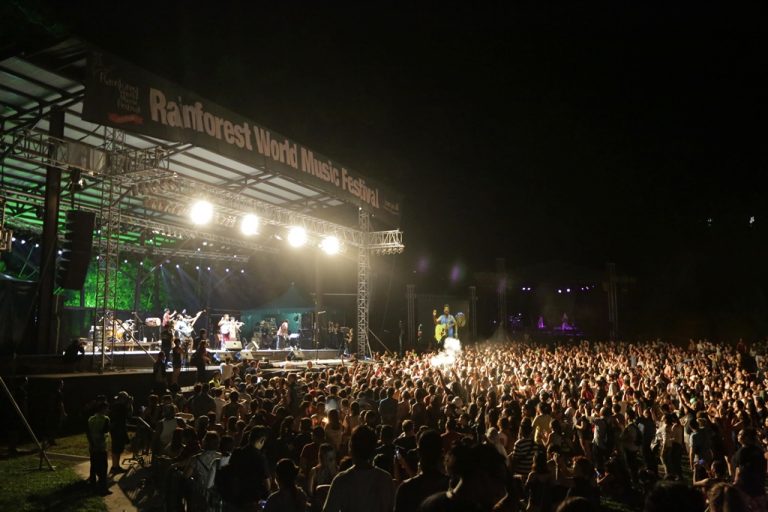
Continuing the art of traditional music not only serves as a reminder of Sarawak’s unique roots, but it also ensures that its authenticity remains to be enjoyed by the world for many generations to come.
You can catch At Adau and Alena Murang sharing their captivating music at Rainforest World Music Festival this July 10 to 12, 2020 at the Sarawak Cultural Village in Kuching.